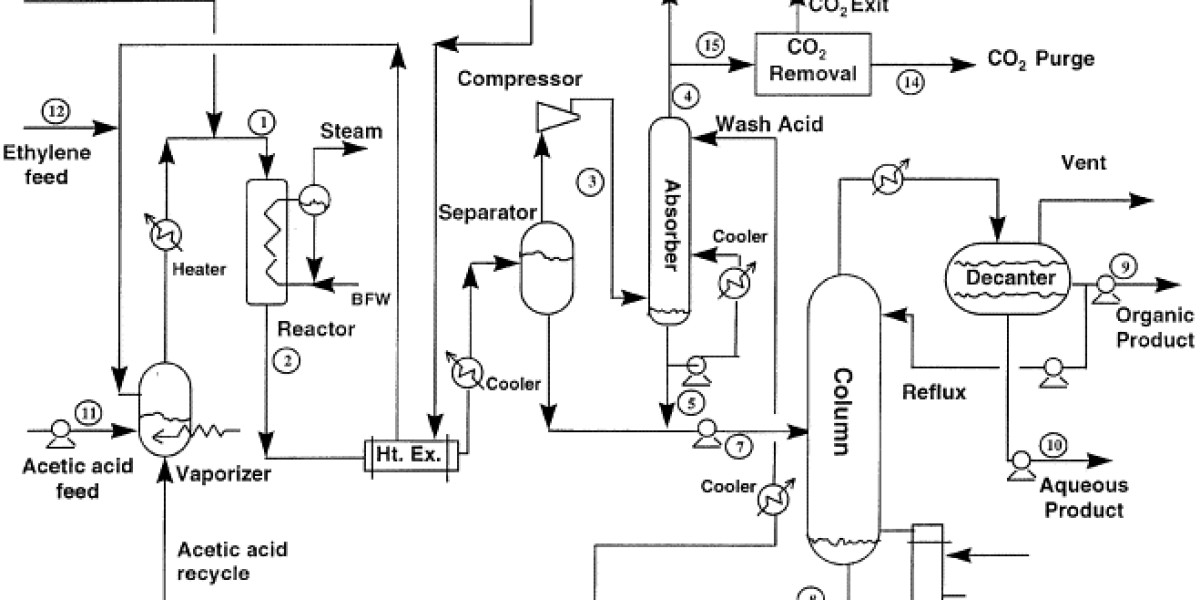Vinyl Acetate Monomer (VAM) is a key chemical intermediate used in the production of various polymers and resins, offering versatility in applications across industries. This blog explores the dynamics of the global VAM market, analyzing key drivers, applications, emerging trends, and future growth prospects.
Understanding the VAM Market:
Vinyl Acetate Monomer (VAM) Is an organic compound produced by the reaction of acetylene and acetic acid. It serves as a crucial building block in the synthesis of polyvinyl acetate (PVAc), ethylene-vinyl acetate (EVA) copolymers, and other vinyl acetate-based polymers and resins.
Market Dynamics:
Polymer Production: VAM is primarily used in the production of PVAc, a versatile polymer used in adhesives, paints, coatings, textiles, and packaging materials due to its adhesive properties, flexibility, and film-forming capabilities.
Adhesives and Sealants: PVAc-based adhesives and sealants find applications in woodworking, paper packaging, construction, and consumer goods industries, offering strong bonding, versatility, and ease of use.
Coatings and Emulsions: VAM-based polymers are used in paints, coatings, and emulsions for architectural, automotive, and industrial coatings, providing adhesion, durability, and weather resistance properties.
Textile and Nonwoven Applications: VAM polymers are utilized in textile finishes, nonwoven binders, and fiber treatments, enhancing fabric properties such as softness, water repellency, and strength.
Applications Across Industries:
- Adhesives: Woodworking, paper packaging, construction.
- Coatings: Paints, architectural coatings, industrial coatings.
- Textiles: Finishes, nonwoven binders, fiber treatments.
- Packaging: PVAc films, adhesives for flexible packaging.
Market Trends:
Green and Sustainable Solutions: Increasing demand for eco-friendly adhesives, coatings, and polymers drives the development of bio-based VAM and sustainable formulations using recycled materials, aligning with environmental regulations and market preferences.
High-Performance Applications: Innovations in VAM-based copolymers such as EVA copolymers and VAM-acrylic copolymers cater to specialized applications in automotive, electronics, and medical sectors requiring enhanced properties such as heat resistance, flexibility, and chemical resistance.
Technological Advancements: Advances in VAM production processes, catalyst technologies, and polymerization techniques improve efficiency, product quality, and cost-effectiveness, driving market competitiveness.
Future Prospects:
The global VAM market is poised for significant growth, driven by the expanding demand for polymers, adhesives, coatings, and specialty materials across industries. Investments in R&D, sustainability initiatives, and market diversification strategies will shape the market's evolution and unlock new opportunities for stakeholders.
Conclusion:
Vinyl Acetate Monomer (VAM) plays a vital role in the production of polymers, adhesives, coatings, and specialty materials essential for diverse industries. Understanding market trends, technological advancements, and sustainability imperatives is crucial for stakeholders in the VAM market to leverage growth opportunities and address evolving industry needs effectively. With a focus on innovation, sustainability, and customized solutions, the VAM market presents promising prospects for continued growth and development in the global chemical and materials industry landscape.







